Planeswalker’s Guide to Avacyn Restored: Part 1
This content was deleted from the Magic website during an update. The original page can be accessed via Wayback Machine here.

During Avacyn’s absence, the angels suffered. Without their leader, the flights became disorganized and ineffectual. Many retreated from view, lost without the power that created them. Avacyn’s disappearance took a toll on the Lofts, the holy site above the Thraben Cathedral where Avacyn dwelled with her hosts of angels. From the outside, the Lofts appear to be a long attic tucked under the eaves. But once inside, the space is much larger than it appears to outsiders. None but the angels are permitted to enter the Lofts. Because of this, there was no outside witness to the dramatic deterioration of the space during Avacyn’s absence. Before, it was an elegant hall in pristine condition. But the hall literally crumbled without the archangel, until rubble covered the flagstones and rain fell through the gaping holes in the roof.
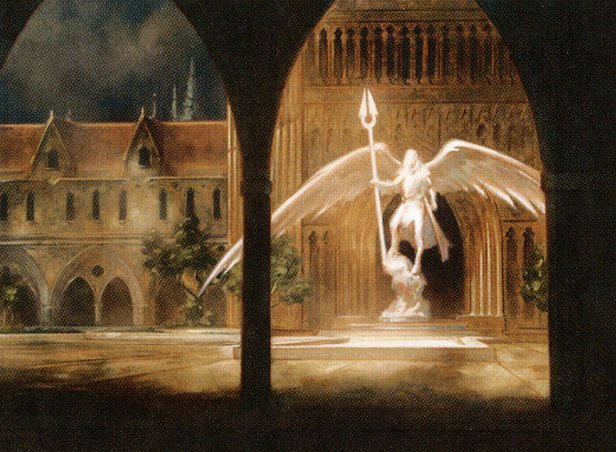
Gisela, the leader of Flight Goldnight, was devastated in the aftermath of Avacyn’s disappearance. Gisela was one of the few witnesses to the battle between Avacyn and Griselbrand. She had been the archangel’s confidant, closest ally, and strongest sword. And when she watched Griselbrand strike Avacyn with a killing blow and trap her in the Helvault, Gisela experienced emotions she’d never felt before: fear, helplessness, and despair.
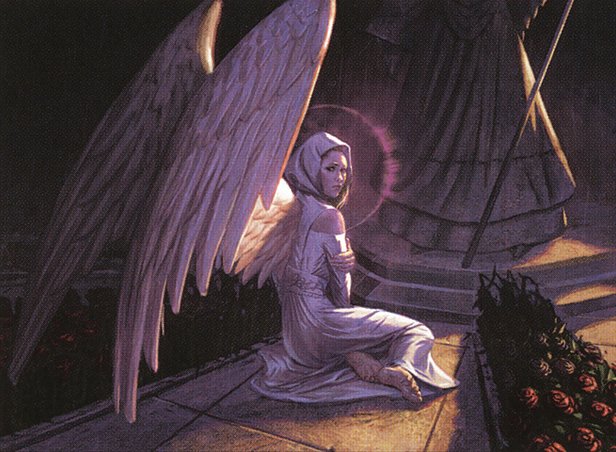
When the Helvault shattered, Avacyn emerged at her full strength. Her presence infused the Avacynian protective wards with holy magic once again. The angelic host was restored to its full power, which gave the humans the chance to gain the upper hand in their fight against evil. The three flights of angels reformed in greater numbers than before. Once again, they became Avacyn’s soldiers on the front lines of battle. Only this time, instead of barely containing the monsters of the world, the angels and their human allies began pushing them back, away from the bastions of human civilization. For the first time, they were winning.
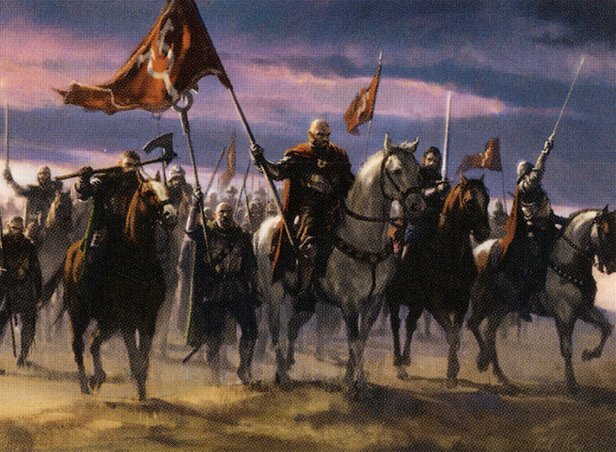
Flights of Angels
Flight Alabaster
This flight of angels is centered in Thraben, and is instrumental in maintaining Avacynian wards. These angels reside mainly in the Lofts and are a familiar sight to the inhabitants of the city. They generally travel in small groups as they visit the centers of healing in the city. Alabaster angels also aid priests and cathars in maintaining the protective wards on the city walls and holy sites throughout Innistrad. According to the other flights, Alabaster angels tend to be overly sentimental, but they think of themselves as practical yet sympathetic. They often do not travel with weapons, preferring to use their magic, and engage in battle only when the conflict can’t be resolved another way. During the archangel’s absence, the Alabaster angels were first to recognize the Avacynian wards were failing. Many remained active—more than those of other flights—doubling their efforts to reinforce the wards. These efforts likely saved Thraben from the fate that befell many other towns and settlements.
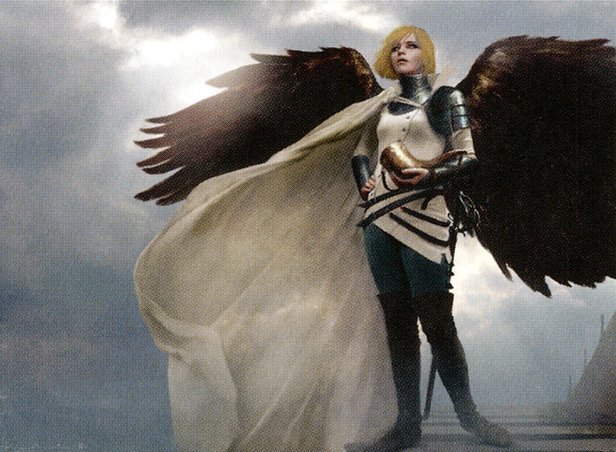
Flight Goldnight
This flight is an army of soldier-angels focus on the martial strength of the church. The flight’s home is the Elgaud Grounds in Nephalia, although there are many Goldnight angels in Thraben. Elgaud Grounds is where the cathars are trained, and the angels are a daily presence in the young soldiers’ lives. At the edge of Elgaud Grounds is an imposing stronghold on a rocky crest that overlooks the ocean. Part church and part fortress, it is called Engelturm. The soldier-angels dwell in a series of narrow spires and interconnecting chambers in the upper levels of Engelturm. These rooms are forbidden to all but Flight Goldnight.
Because it is centered in Nephalia, Flight Goldnight deals with necro-alchemists and their skaab creations more frequently than the other flights. The angels have developed a fierce determination to destroy every trace of the undead and their twisted creators. During Avacyn’s absence, groups of skaab-hunting Goldnight angels became known as “hatchet squads” by the skaberen and human criminal elements. Each such group had a contingent of cathars, or holy warriors, who would hack up and burn the zombie corpses so they couldn’t be revived again.
Any trials against heretics or criminals in the four provinces are presided over by a high priest, but an angel of Flight Goldnight always witnesses the proceedings. Angels are not present at executions, however. These are carried out by nameless executioners. Unlike angels from Flight Alabaster, the soldier-angels of Goldnight always travel armed. When a new cathar regiment is posted in a remote region of Kessig or Stensia, an angel accompanies them on their journey. Angels are unable to remain too long in Stensia because of the lack of wards in that area, however. Even after a couple of days in the province, an angel’s resolve weakens dramatically.
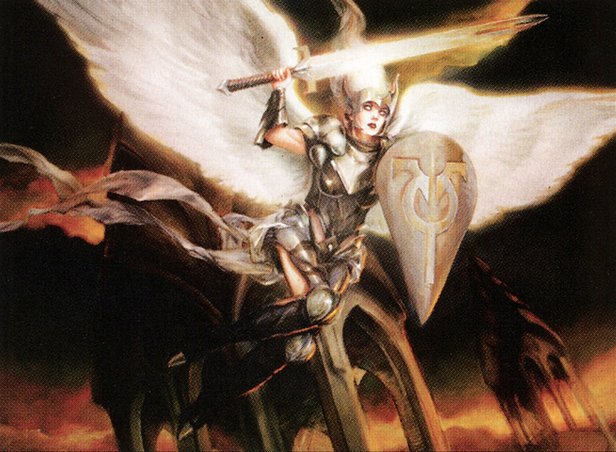
Flight Goldnight angels are characterized by pragmatism and observance of church law. They are strategists in battle and skillful leaders during martial conflicts. Flight Goldnight angels consider their Alabaster sisters to be maudlin and susceptible to the emotional whims of the world. Flight Goldnight angels cultivate a more martial mindset, and are more than willing to take up arms when the need arises. Most Goldnight angels were steadfast—blindly so—in their denial that Avacyn had disappeared, in fact. She was on a mission, they insisted. She knew exactly what she was doing and would soon return.
This faith was rewarded with the shattering of the Helvault. Gisela’s power not only returned, it increased dramatically. She was tasked with continuing the crusade against necromancers and their legions of undead, which she embraced with fervor and devotion.
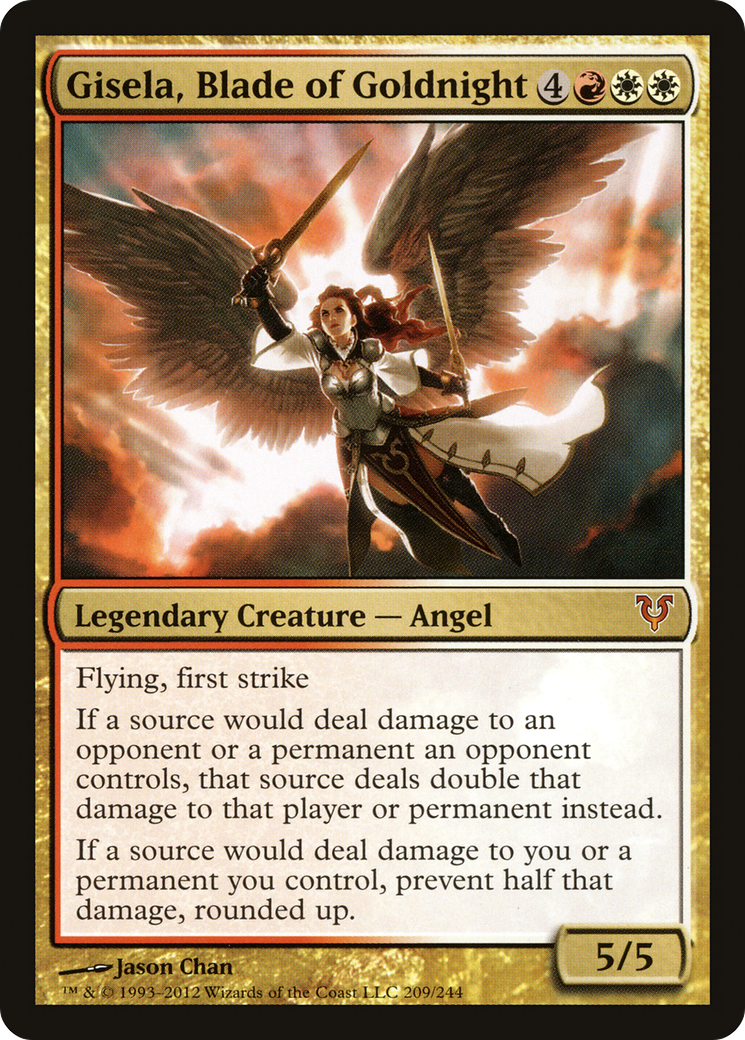
Flight of Herons
These are the angels of birth, rebirth, and purity, and are associated with the New Moon season. Their magic is said to ward humans against harm in life. This is the smallest flight of angels, and its primary function had been scouting and tracking werewolves and other marauding monsters. When Avacyn disappeared, they moved their home from Thraben to Videns, a holy site in the far reaches of the Gavony province. The angels of this flight continued to travel through remote areas, trying to prop up the failing wards in regions far beyond the safety of Thraben.
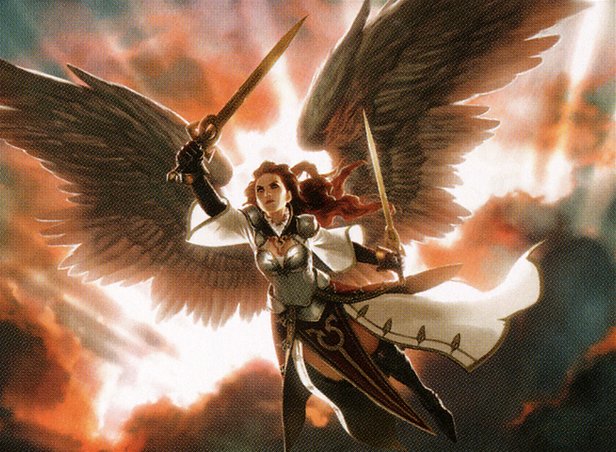
Because they are closer to Kessig than the other flights, the Heron angels were instrumental in the inquisition against werewolves. They worked closely with the cathars stationed in Kessig. In the final days before Avacyn’s return, ferocious howlpacks ran wild over Kessig, forcing countless humans to take up residence in walled settlements protected by too few angels and cathars. The Flight of Herons directed its efforts on this threat, and its presence saved untold lives. Of all the flights, the Herons were the closest to giving up on Avacyn. They believed they would have to turn to forces in nature for new sources of power and security.
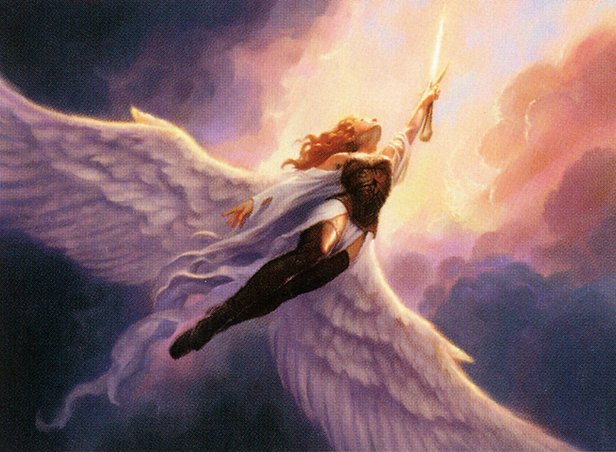
Avacynian Archmages
Each archmage of Avacyn was an acolyte of the church who, at some point, showed a natural ability to channel the archangel’s divine power, but beyond that common trait they could be anyone within Innistrad. Once identified and sought out by the elders, these talented few would then be taken and immersed in the secret orders of mages within each of the angelic flights. These abilities and powers have been historically passed down through angelic masters and eventually to humans. All the archmage lineages can be traced back to Avacyn herself.
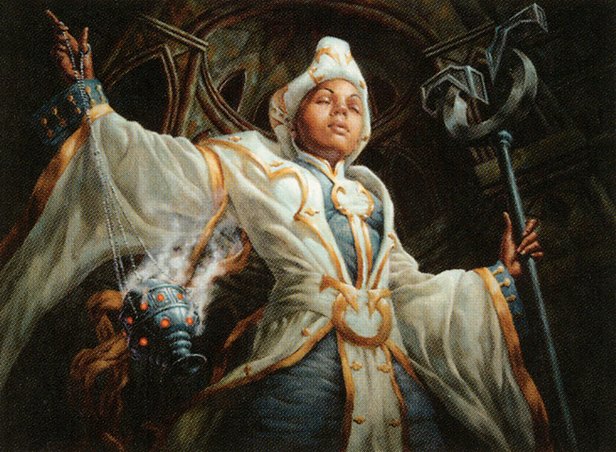
When Avacyn was bound within the Helvault, the archmages lost most, if not all, their power. The elders of the three orders saw this as a time to revivify the old ways, of times even before Avacyn. They each began to relearn how to survive and utilize their talents without Avacyn’s emanations of holy energy. Some practiced martial combat and their own derivations of magical spells and enchantments.
Others focused on the natural elements of the land, relearning the strange alchemical properties of nature and harnessing them to their purpose. A few reopened ancient tomes about healing plants, sacred springs, and magical wards to continue ministering to those in need.
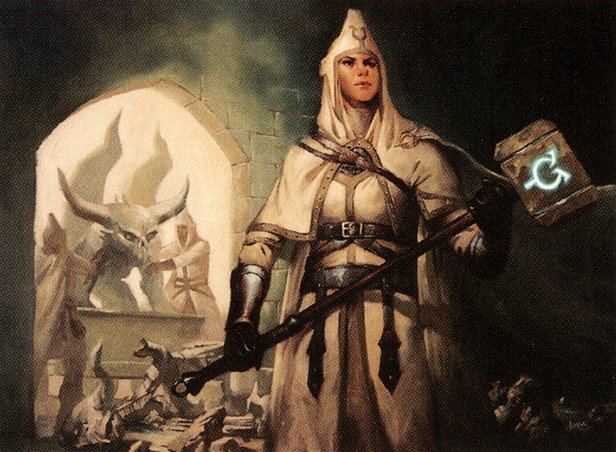
Now that Avacyn has returned, the archmages are infused with power yet again and also have the natural abilities to accompany that power. They are forces to be reckoned with and include the most powerful wizards on the plane. Each lineage has its own specific garb and accoutrements, so most inhabitants of Innistrad can recognize them at a glance.
- Archmages of Goldnight are called “spearsages.” The archmages in this order are associated with the power of the sun. Their spells are powerful and aggressive, casting blinding rays of holy light to blast hordes of undead into ash and boosting their allies with courage and speed. Prophecies had spoken about Avacyn one day vanishing from Innistrad and the Archmages of Goldnight took this very seriously. They made sure to train themselves in both the arcane and the martial arts. If push comes to shove, they are not squeamish about taking up weapons. They often wear armor under their robes, and their weapons and armor are emblazoned with the symbol of Avacyn’s twin-bladed spear in front of the sun.
- Archmages of Alabaster are known as “moonsages.” These archmages are concerned with keeping the human flock from returning as zombies. Their magic is preventative or warding, banishing undead to the void and making sure graves remain sealed. This order dips a little into the realms of alchemy and studies some of the works of notable skaberen and ghoulcallers to better understand the forces that can animate the dead. Most of the writing and lore that has been done on the Helvault is the work of moonsages. They used alchemy to purify moonsilver from wherever they could find it, creating powerful amulets, wards, and weapons for Avacynian cathars and clergy. Their weaponry is fused with more unique and odd designs, perhaps a result of their specializing in artifacts and the undead. Their symbol is that of Avacyn’s collar rising above the moon.
- Archmages of Herons are the “springsages.” This order is concerned with healing. Its magic and use of the natural world can restore health to a single person or sometimes an entire group. Most of the acolytes in this order were Avacynian priests who wandered throughout the remote places of Innistrad, ministering to the people and healing the sick, eventually becoming enamored with a life of wandering and solitude. Thus the springsages often live in monastery-like cloisters, tending their gardens and appreciating the beauty of nature. With their renewed powers, the Archmages of Herons quickly sought out repentant werewolves. Their weapons are usually wood staves and clubs and their armor (if any) is simple leather hardened with wax. Their symbol is a heron within a circle, often tattooed.
Gryffs and Gryff-Riders
It’s been years since anyone on Innistrad has seen any of the elegant, heron-headed species of griffin known as the gryff. Gryffs are longer and leaner than the traditional Innistrad griffin, with flexible necks, sleek hindquarters, lance-like beaks, and equine hooves. Gryffs are swift and nimble flyers, natural enemies of dark creatures, and a powerful force for the side of Avacyn and her angels.
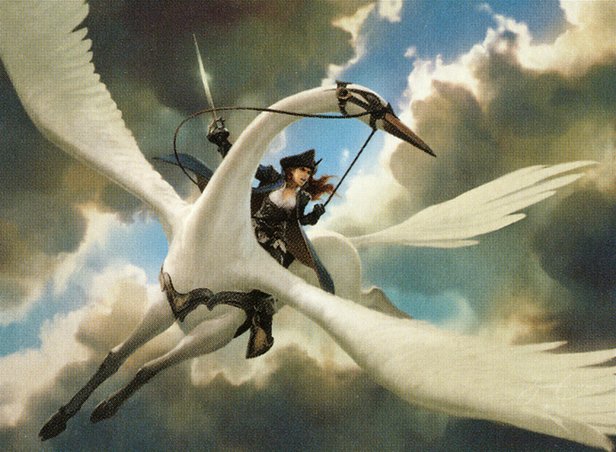
Gryffs are sensitive creatures. They have been known to become visibly agitated when in the presence of dark forces. Some clerics have used gryffs to detect malevolent geists, pierce the glamers of vampires, and uncover the corrupting influence of the demonic Skirsdag cult. Thought to be emissaries or agents of Avacyn, gryffs are revered as divine beings. The heron-like head and wings of gryffs suggest the heron symbol of Avacyn and the shape of the markings in the silver moon. Gryffs can manifest power similar to strong Avacynian magic, and their screeching cries can call on angels and other celestial creatures.
Gryff-knights are Avacyn’s aerial cavaliers. Most griffins are too surly or unpredictable to be ridden, but gryffs seem naturally suited to mounted combat, as their agility and poise translate into a smooth but maneuverable ride. Cathars of the Gryffbond Order, or simply the gryff-knights, are a type of cathar dedicated to mounted combat in the skies. Gryff-knights are paired off one-to-one with their gryff companions and stay with that union until one of them dies. Knights swear solemn oaths to their gryff companions, and it is thought the gryffs answer in kind. Gryff-knights are not like griffin riders on other planes, because they recognize the beast under their saddle is the greater being in the equation; they are merely there to aid and protect the gryff. Gryff-knights learn to read the moods and even understand the vocalizations of their gryff companions and can tell when a gryff has sensed nearby evil.
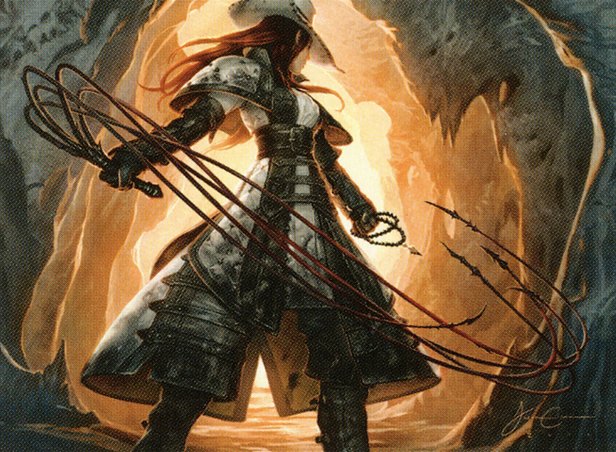
Even in this time of Avacyn’s return, evil still lurks. The Gryffbond Order has devised a potent technique for slaying especially powerful demons and other epic foes. The gryff and its rider fly straight at the enemy while the gryff-knight lowers his or her lance and chants an Avacynian prayer. The two of them undergo a magical transformation, becoming fused together as a single divine weapon. Together, the Gryffbond Knight and gryff companion slam into the enemy creature, sacrificing their lives but also slaying the enemy.
New Evil Arises
Devil’s Breach. Once just a story that far-ranging trappers and woodsfolk would talk about around the fireplace, the Devil’s Breach has now opened up wider and deeper, revealing tunnels and pathways into realms infernal and twisted. Imps, devils, and demons clamoring to get to the surface can now rush out into Innistrad to ply their homicidal trade to all and sundry. All these changes are no doubt caused by the release of Griselbrand from the Helvault. The Devil’s Breach is now a massive tear in the surface spewing out brimstone and fire. The surrounding forest, once green and lush, has charred and blackened, while imps and devils dance all day and night to the flickering fire spewing from the chasm.
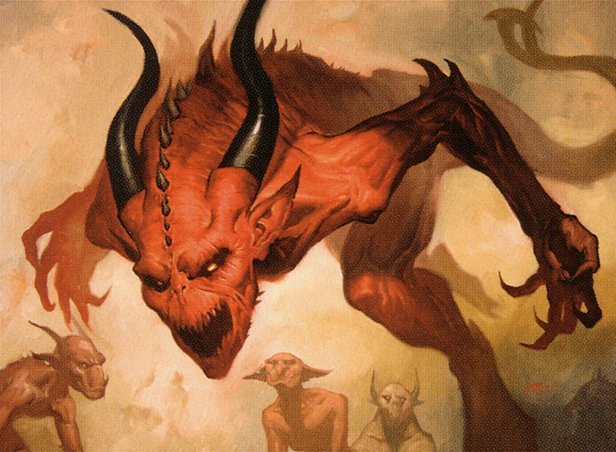
Part 1
